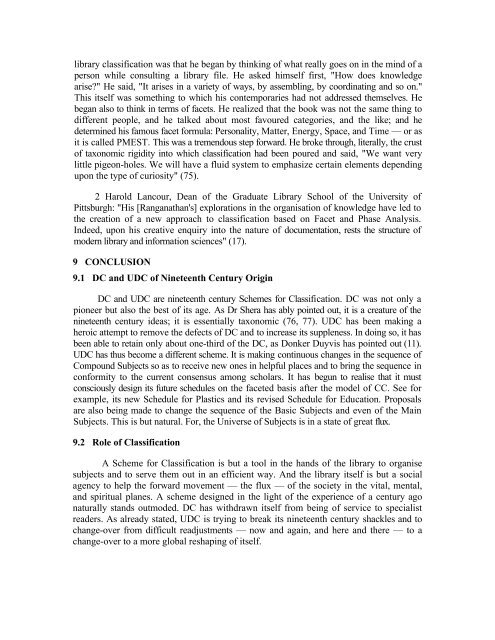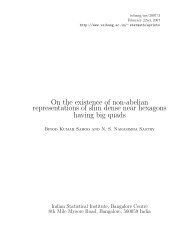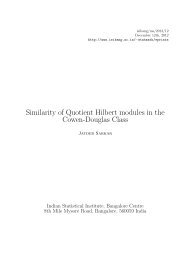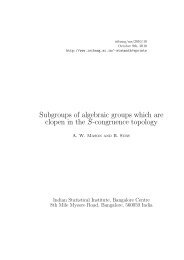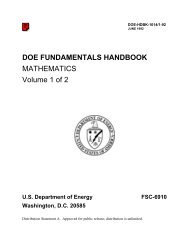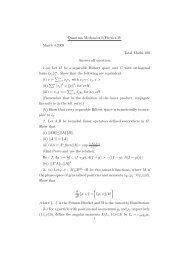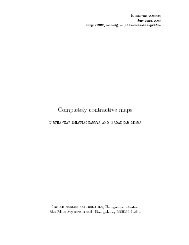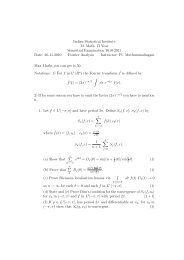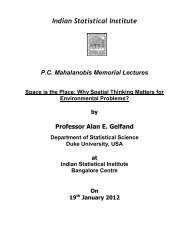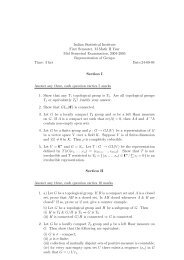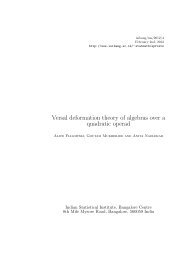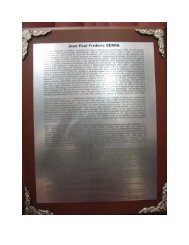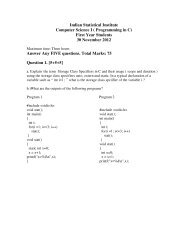CHOICE OF SCHEME FOR CLASSIFICATION - Indian Statistical ...
CHOICE OF SCHEME FOR CLASSIFICATION - Indian Statistical ...
CHOICE OF SCHEME FOR CLASSIFICATION - Indian Statistical ...
Create successful ePaper yourself
Turn your PDF publications into a flip-book with our unique Google optimized e-Paper software.
library classification was that he began by thinking of what really goes on in the mind of a<br />
person while consulting a library file. He asked himself first, "How does knowledge<br />
arise?" He said, "It arises in a variety of ways, by assembling, by coordinating and so on."<br />
This itself was something to which his contemporaries had not addressed themselves. He<br />
began also to think in terms of facets. He realized that the book was not the same thing to<br />
different people, and he talked about most favoured categories, and the like; and he<br />
determined his famous facet formula: Personality, Matter, Energy, Space, and Time — or as<br />
it is called PMEST. This was a tremendous step forward. He broke through, literally, the crust<br />
of taxonomic rigidity into which classification had been poured and said, "We want very<br />
little pigeon-holes. We will have a fluid system to emphasize certain elements depending<br />
upon the type of curiosity" (75).<br />
2 Harold Lancour, Dean of the Graduate Library School of the University of<br />
Pittsburgh: "His [Ranganathan's] explorations in the organisation of knowledge have led to<br />
the creation of a new approach to classification based on Facet and Phase Analysis.<br />
Indeed, upon his creative enquiry into the nature of documentation, rests the structure of<br />
modern library and information sciences" (17).<br />
9 CONCLUSION<br />
9.1 DC and UDC of Nineteenth Century Origin<br />
DC and UDC are nineteenth century Schemes for Classification. DC was not only a<br />
pioneer but also the best of its age. As Dr Shera has ably pointed out, it is a creature of the<br />
nineteenth century ideas; it is essentially taxonomic (76, 77). UDC has been making a<br />
heroic attempt to remove the defects of DC and to increase its suppleness. In doing so, it has<br />
been able to retain only about one-third of the DC, as Donker Duyvis has pointed out (11).<br />
UDC has thus become a different scheme. It is making continuous changes in the sequence of<br />
Compound Subjects so as to receive new ones in helpful places and to bring the sequence in<br />
conformity to the current consensus among scholars. It has begun to realise that it must<br />
consciously design its future schedules on the faceted basis after the model of CC. See for<br />
example, its new Schedule for Plastics and its revised Schedule for Education. Proposals<br />
are also being made to change the sequence of the Basic Subjects and even of the Main<br />
Subjects. This is but natural. For, the Universe of Subjects is in a state of great flux.<br />
9.2 Role of Classification<br />
A Scheme for Classification is but a tool in the hands of the library to organise<br />
subjects and to serve them out in an efficient way. And the library itself is but a social<br />
agency to help the forward movement — the flux — of the society in the vital, mental,<br />
and spiritual planes. A scheme designed in the light of the experience of a century ago<br />
naturally stands outmoded. DC has withdrawn itself from being of service to specialist<br />
readers. As already stated, UDC is trying to break its nineteenth century shackles and to<br />
change-over from difficult readjustments — now and again, and here and there — to a<br />
change-over to a more global reshaping of itself.


